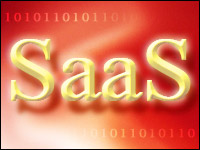It can be a full-time job trying to keep up with Salesforce’s newest cloud offerings and messaging. However, it is always worth the effort, because the company’s pronouncements are often early bellwethers of the future direction of the software industry.
This has become particularly true with respect to the company’s evolving efforts to penetrate and gain a prominent position in the artificial intelligence and Internet of Things markets. Salesforce’s most recent moves, in anticipation of its annual Dreamforce conference, also could be a key indicator of the rapidly changing competitive landscape.
Battle for PaaS Supremacy
Salesforce has been in the vanguard of promoting Software as a Service and, more broadly, the value of the cloud. As it has gained success with its widening array of SaaS/cloud offerings, it also has borrowed a strategy from the traditional software industry playbook: adding a development layer to its SaaS applications, thus enabling its customers and partners to build their own software solutions to meet their particular business needs.
Many industry observers have expected this Platform as a Service layer to become the next major battlefield within the cloud marketplace, because it clearly would show where customers and partners were making their biggest bets from a vendor alignment standpoint.
The global PaaS market will multiply in size more than four times, from US$1.28 billion in 2013 to $6.94 billion in 2018, representing a compound annual growth rate of 32.5%, according to MarketsandMarkets.
Even greater optimism about the size and growth of the worldwide PaaS market comes from Gartner, which assessed the PaaS market at approximately $7.2B in revenue in 2016, and predicted it will equal $10.6 billion in 2018, and double in size to $14.8 billion in 2020.
While that suggests impressive growth is ahead, the PaaS market would remain a fraction of the size of the global SaaS market, according to Gartner, which estimated that the SaaS market is currently $46.3 billion and will jump to $75.7 billion in 2020.
Despite the disparity in size, the battle for PaaS supremacy has continued to escalate. In fact, Salesforce has ceased talking about a single platform underpinning all of its SaaS capabilities. Instead, it has built and acquired a myriad of platforms for various purposes.
The company’s platforms not only have multiplied in number, but also have experienced name changes over time.
This evolving platform story has had a significant impact on Salesforce’s efforts to penetrate and win a major share of the artificial intelligence and Internet of Things markets. The company’s AI efforts began with its introduction of the WAVE analytics platform three years ago, and broadened a year ago with its rollout of the Einstein AI platform.
Salesforce’s IoT platform play has centered around its Thunder offering. The new Salesforce IoT edition set for launch this fall is an application built on its SaaS platform (formerly referred to as the “AppCloud”). It enables business users, rather than software engineers, to experiment in IoT to turn device data directly into business value.
Betting on APIs
The proliferation of platforms, both inside and outside of Salesforce, has created plenty of confusion among software developers and IT/business decision makers tasked with sorting out which PaaS is best for each use case.
The line of demarcation between PaaS and Infrastructure as a Service offerings from Amazon Web Services, Microsoft Azure and other cloud service providers has complicated the PaaS selection and implementation process. This confusion hasn’t helped Salesforce’s PaaS sales efforts.
So, it isn’t surprising that Salesforce has adopted a strategy to change the competitive landscape by putting more emphasis on the power of its application programming interfaces to improve the positioning of its IoT and AI capabilities.
Rather than continue to promote the ability of organizations to create their own applications via its PaaS offerings, Salesforce has promised to increase speed to value via its APIs. The new value proposition is that the APIs can capture data from various devices, products and “things,” and convert that data into meaningful commands via its Service Cloud and other SaaS solutions.
Salesforce’s new IoT Explorer package emphasizes the company’s API capabilities. The less expensive starter kit includes APIs that can translate IoT end-point data into meaningful triggers in Salesforce’s Service Cloud and other offerings.
So, instead of spending a lot of money to build elaborate IoT solutions on one of Salesforce’s PaaS layers without knowing the ultimate cost or financial return, companies now can make a smaller bet on a more targeted initiative, and use less costly or complicated APIs to test the value of the IoT idea.
Since the functional value of APIs is well documented and broadly understood, Salesforce’s bet is that selling the immediate value of its APIs in IoT and AI use cases will be easier than the more complex, long-term achievement of benefits through PaaS.
The company also hopes that the relatively economical cost of APIs will make it an easier sale than the more strategic investment in PaaS.
If these assumptions are correct, Salesforce could succeed in circumventing the PaaS logjam that up to now has prevented it from gaining a major foothold in the IoT and AI market.






















































Social Media
See all Social Media